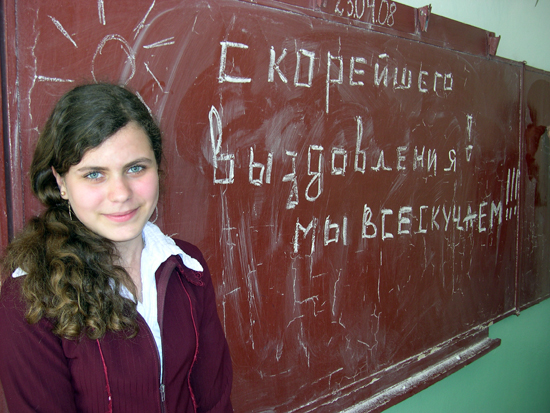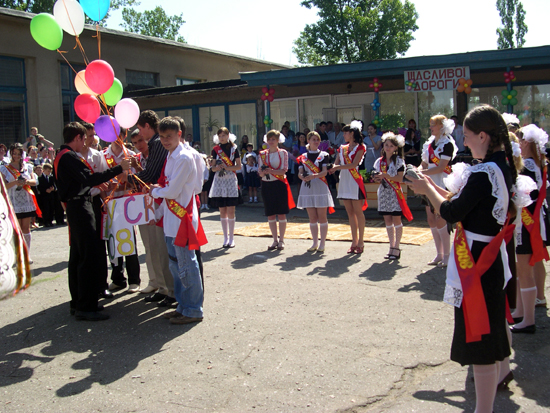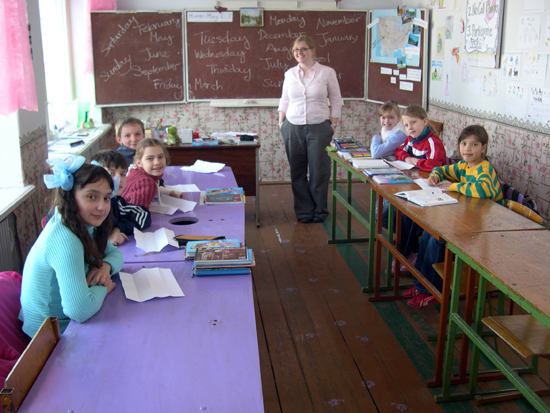Introduction
Elementary and lower secondary education is compulsory in Ukraine, from the ages of six to 15, for a total of nine years. The language of instruction is Ukrainian, although there are schools that cater to the country's many linguistic minorities. Homeschooling is illegal in Ukraine.
Formal structure of the school system
Preschool
Type of school: Dityachiy Sad (Kindergarten)
Length of Program: 3 years
Age: 3 to 6 years
Elementary
Type of school: Elementary School
Length of Program: 4 years
Age: 6 to 10 years
Lower Secondary
Type of school: Osnowna Serednia Shkola
Length of Program: 5 years
Age: 10 to 15 years
Final Award: Swidoctwo Pro Nepownu Seredniu Oswitu (Lower Secondary School Leaving Certificate)
Upper Secondary
Type of school: Licei (Upper Secondary Special School)
Length of Program: 2 years
Age: 16 to 17 years
Final Award: Atestat (Matriculation School Certificate)
Upper Secondary
Type of school: Starsha Serednia Shkola (Upper Secondary School)
Length of Program: 2 years
Age: 16 to 17 years
Final Award: Atestat (Matriculation School Certificate)
Special
Type of school: Gimnazia (Upper Secondary Special School)
Length of Program: 2 years
Age: 16 to 17 years
Final Award: Atestat (Matriculation School Certificate)
Vocational
Type of school: Technikum (Vocational Secondary School)
Length of Program: 3-4 years
Age: 16 to 19 years
Final Award: Atestat, Diplom Technika (Matriculation School Certificate, Professional Secondary School Leaving Diploma, Junior Specialist)
Vocational
Type of school: Profesijno-Tecnichne Uchylyshche (Vocational School)
Length of Program: 3-4 years
Age: 16 to 20 years
Final Award: Atestat, Swidoctwo Pro Zakinchennia Uchylyshcha (Matriculation School Certificate, Vocational School Leaving Certificate)
The Ukrainian educational system has changed several times since the fall of the Soviet Union, most recently with a return in 2010 to the 11-year system that had been replaced by a 12-year system in 2001. The majority of Ukrainian children attend optional preschool programs.
The Lower Secondary School Leaving Certificate is required to advance to upper secondary schooling. After nine years of compulsory education, students have the option of choosing upper secondary or vocational schooling. Vocational schools typically take four years for students who have a lower school certificate, and three years for students who hold the Atestat.
The matriculation examination, for which the Atestat is awarded, gives students access to higher education. As of 2010, however, there is also external independent testing that takes the place of entrance examinations to universities.
School Timetable
Semester dates: One: September to January; Two: February to June
School hours: 08:30 to between 14:00 and 16:00
Grading System
Most secondary schools in Ukraine grade student performance on a numerical scale from 1 to 12. On this scale, 12 is the highest grade possible, scores of 10 or higher are considered excellent, 4 is the minimum passing grade, and 1 is the lowest possible score.
Ukrainian higher education institutions typically evaluate students on a four-point scale from 2 to 5, where 5 is the highest possible score, 3 constitutes a passing grade, and 2 is a failing grade. Plus or minus marks are sometimes added to these grades. Some universities use a 0 to 100 scale, where 100 is the highest score and 60 is the minimum passing grade.
Cost of Schooling
Education in state schools is legally free, but there has been increasing demand for parents to fill funding shortfalls, as the country's government does not meet its legislated expenditure requirements for education. Contributions to school funds pay for textbooks and add to teachers' salaries, which are below the national subsistence minimum in many cases. These contributions, while ostensibly voluntary, are often in practice mandatory.
Special Schools
The country has a dual education system, with mainstream and special schools. During the 2005–2006 academic year, 54,000 children with special needs were enrolled in 396 special schools. However, there has been a move in the past 20 years to include special-needs children within the mainstream school system. Although the number of schools had risen by five from 2001 to 2005, enrollment in special schools fell by over 7,000 during the same period.
The push in recent years to move from integration to the model of inclusion has been driven mostly by international and local non-governmental organizations. According to UNESCO, barriers to more inclusive programming include a dearth of qualified and experienced teachers, limited training, and the scarcity of special equipment and literature. There is also a low readiness in Ukrainian society to accept inclusion. The government's policy does not make a distinction between integrative and inclusive models.
Curriculum
The Ministry of Education and Science, Youth and Sports generally sets the school curriculum. The curriculum includes classes on Ukrainian and world history, language and literature, mathematics, and sciences such as physics, chemistry, biology, and geography. Schools have some freedom in determining the time allocated to each subject, as well as the focus in the history and language courses. Many students attend specialized music or art schools as extracurricular activities.
The government mandates external independent testing for secondary school graduates in Ukrainian language and literature, the history of Ukraine, mathematics, biology, physics, chemistry, geography, and one foreign language of the student's choice: either English, German, French, or Spanish. These tests have the status of entrance examinations to higher education institutions.
Міністерство освіти і науки, молоді та спорту України (Ministry of Education and Science, Youth and Sports of Ukraine)
10 Peremohy Str.
Kyiv, Ukraine 01135
Tel: [380] (44) 486 2442
Fax: [380] (44) 236 1049
Email: ministry@mon.gov.ua
Web: www.mon.gov.ua
Copyright © 1993-2024 World Trade Press. All rights reserved.





